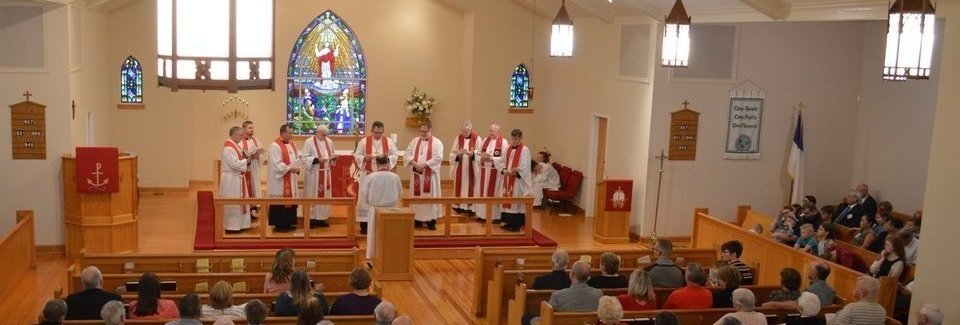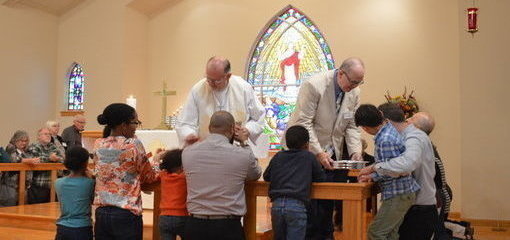Worship with Us
We believe God reaches out to us primarily through his Holy Word and blessed Sacraments; the Bible, the Gospel proclaimed in the sermon, Holy Baptism and the weekly celebrations of Holy Communion.
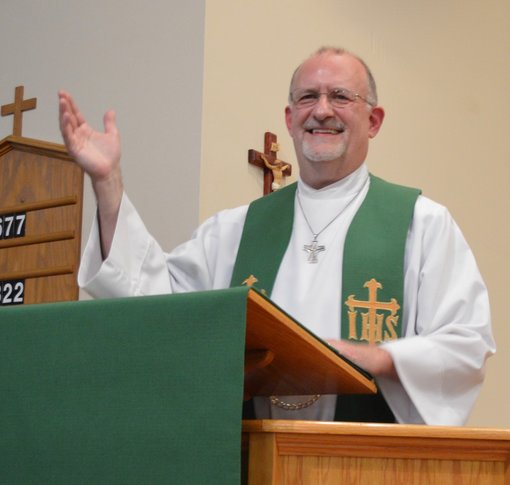
We are gathered together by the prompting power of God the Holy Spirit to receive enlightenment for this journey called life. Here we receive new strength from the Word of God to carry on as people, while we are constantly being filled with new hope in a fallen and despairing world.
THE DIVINE SERVICE
Preparation for Worship
In gathering for our corporate public worship services, we are to enter the sanctuary with reverence. We take time to pray that our hearts and minds will be properly focused on the things of God while in this sacred, holy place. During our service, you may see worshipers demonstrating their reverence by their making the sign of the cross to remind them of their baptisms in the name of the Father, Son, and Holy Spirit. Some worshipers will bow as they pass in front of the altar as a reminder that they are in a holy place. We kneel as a symbol of our humility during our celebration of communion; however, for those who are unable to kneel, please remain standing.
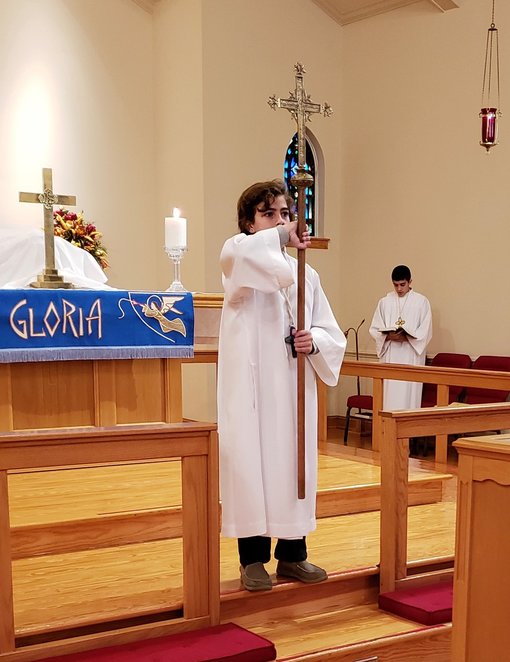
At the beginning of the service, marked by the entrance hymn, the congregation turns and faces the processional cross being carried forth. In doing so, we recall Jesus’ own promise prior to his crucifixion. “And I, when I am lifted up, will draw all people unto myself” (John 12:32).
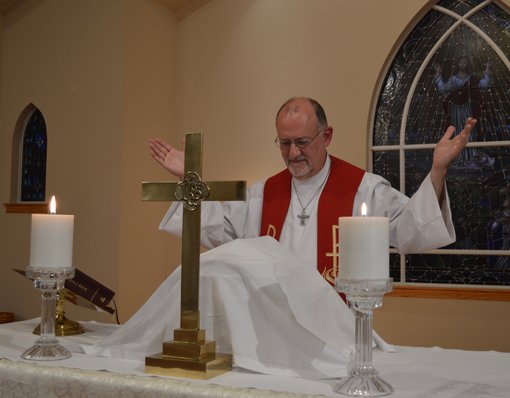
After the confession of our sins and pronouncement of God’s forgiveness, the historic prayers of the Kyrie,” Greek for “Lord, have mercy,” are prayed and the hymn of praise is offered.
Hearing and Pondering God’s Word
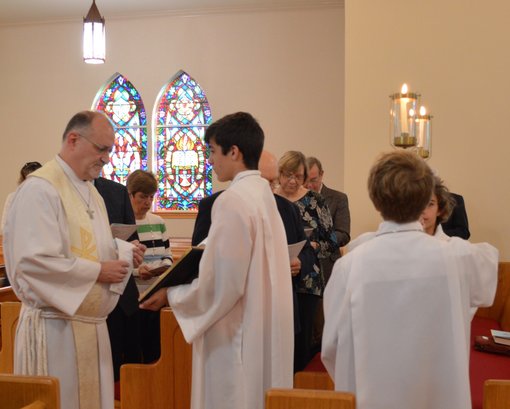
The second part of the liturgy is fully centered on the Word of God. A sermon responds to the appointed Bible readings by proclaiming the Gospel and its application to our daily lives.
The Sacrament of the Altar
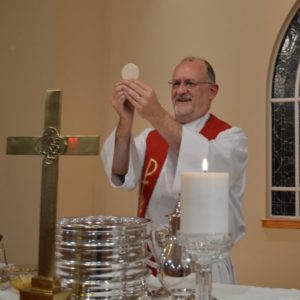
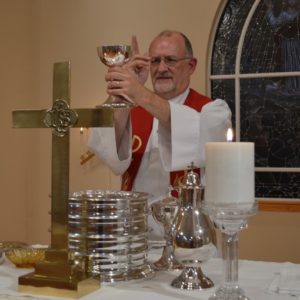
The third part of the liturgy begins with the celebration of the Lord’s Supper, also known as Holy Communion or the Holy Eucharist. This holy meal is the central most aspect of Christian worship. Christ calls to our remembrance the sacrifice he made for us for the forgiveness of our sins, and comes to us with his true body and true blood in a supernatural way that impresses his real presence upon us, through the eating of the consecrated bread and drinking of the consecrated wine.

Refreshed, forgiven and inspired, we reach the closing words of the liturgy in the Benediction. In these words we are sent out into the world to share the redeeming Word of God with all peoples, as we work for peace and justice and seek to serve God through our service to other people.
HYMN SINGING
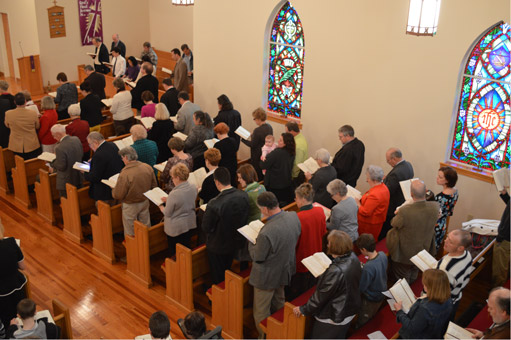
At the time of the Reformation, Martin Luther translated many Latin and Greek hymns into the native language of the German people. The hymns we sing from the Lutheran Service Book (LSB, 2006) are, to a large degree, English translations of great hymns dating from the time of the 16th century Reformation of the Church to the present era.
PROCESSIONS
On the chief festival days of the liturgical church year, the celebration of the Divine Service is heightened by the use of a Gospel procession. As the entrance hymn begins the processional cross now has a torch on either side to enhance its prominence and the Holy Bible is carried to honor the sacred Scriptures of the Old and New Testaments as the inspired Word of God (2 Timothy 3:16).
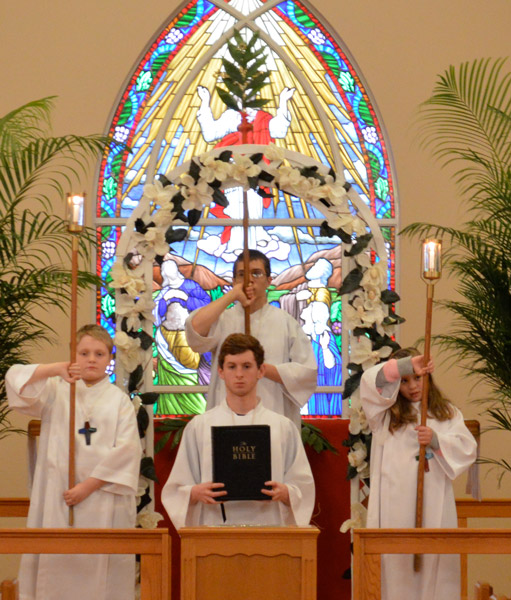
Before the Gospel lesson is read, the processional cross, torches and Holy Bible are carried to the center of the worshiping congregation to remind us of our Lord’s incarnation, “The Word becoming flesh and dwelling among us full of grace and truth” (John 1:14). This action stresses the intimacy of our Lord Jesus in our lives.
Baptismal Symbols
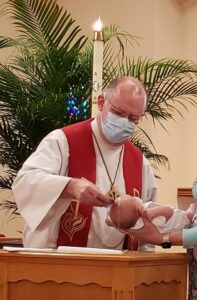
Holy Baptism is a sacrament, or sacred act that was instituted by God, in which He gives grace and forgiveness of sins with water and the Word, “in the name of the Father, Son, and Holy Spirit.” Often we baptize infants, but persons of any age may be baptized because God’s gifts are available to everyone.
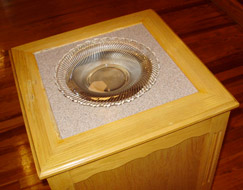
We are reminded of our baptism by the font, or bowl, filled with water at the front of the church. The paschal candle (see photo in “Preparation for Worship”) is also a baptismal symbol that reminds us of Jesus’ victory, and thus our victory, over death.
Confirmation Service
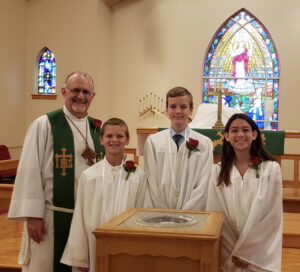
Upon completion of the multi-year confirmation classes, our young people are ready to publicly affirm their Baptism on their Day of Confirmation. The Service is held each spring during the Season of Pentecost at a 10:30 AM service. Pastor meets with these students prior to this special day to review their Confirmation journey and rehearse the students’ participation during the service.
Children in Worship
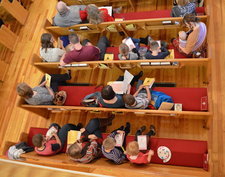
Mount Olive welcomes children of all ages in worship. Children learn worship by copying their parents and the congregation. By school age, most children learn to follow the service. Parents, if you need to leave the worship service with your child, you may take your infants and toddlers to the staffed church nursery. It is located through the left rear entrance of the sanctuary. The ushers can assist you. Older children may enjoy a children’s bulletin which you may pick up in the narthex.
Remember: A smile of encouragement is always welcome to parents with small active children.
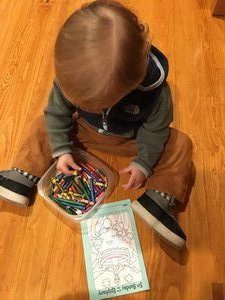
As children begin school and learn to read, parents and grandparents encourage them to follow along in the bulletin and hymnal. It is uplifting to see the children grow.

Our Scripture Readings:
The Lectionary
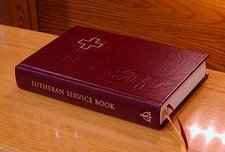
A lectionary is a collection of readings from Sacred Scripture. Readings are arranged according to the Church’s calendar and are intended to be read at the regular, weekly gathering of God’s people.
Already in the fourth century, readings were gathered together for this purpose. Initially, the readings were arranged in a continuous fashion, with each Sunday’s texts picking up where the reading had concluded the previous week. For the festival half of the church year (Advent through Pentecost), readings were eventually assigned that reflected the theme of the day.
The Lectionaries of the Lutheran Service Book (pp. xiv-xxiii) provide Sunday readings that begin with the season of Advent. For each Sunday and festival, three Scripture readings are listed from the Old Testament, the New Testament (an Epistle reading) and a Gospel reading. Psalms for the week are also appointed. These scripture readings are often the basis of the sermon for that Sunday.
Mount Olive uses the most commonly used Lectionary is the Three-Year Series (A, B, C). Year A focuses on the Gospel of Matthew, Year B focuses on the Gospel of Mark and selections from the Gospel of John, and Year C focuses on the Gospel of Luke. For more information about the Lectionary and Lutheran Worship, visit the LCMS Worship page.
Click to view the LCMS Church Year B Lectionary that will begin on December 3, 2023 and will go through November 2024.
Church Year Signs
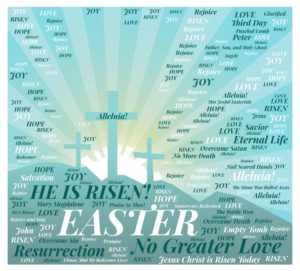
Mount Olive wants to share a visual reminder of the church seasons with everyone who enters its doors. In 2019, the Public Relations Board completed a series of signs that correspond to the church seasons, festivals, and holy days. These signs are located at the main entrance of the church. As you enter, take a few minutes to study the sign. It will help you to focus on the day’s worship, in both Word and music.
Vestments
White robes called albs (“alba” is the Latin word for white) are worn by ministers serving as worship leaders. The white symbolizes “putting on of Christ,” or living out our baptisms. Stoles are also worn by ordained ministers; these colored shawls, sometimes ornately decorated, reflect the liturgical season. They are also taken as clergy’s yoke of Christ’s service (Matthew 11:29). At times the pastor leading Holy Communion wears a chasuble, a colorful, decorated poncho.

